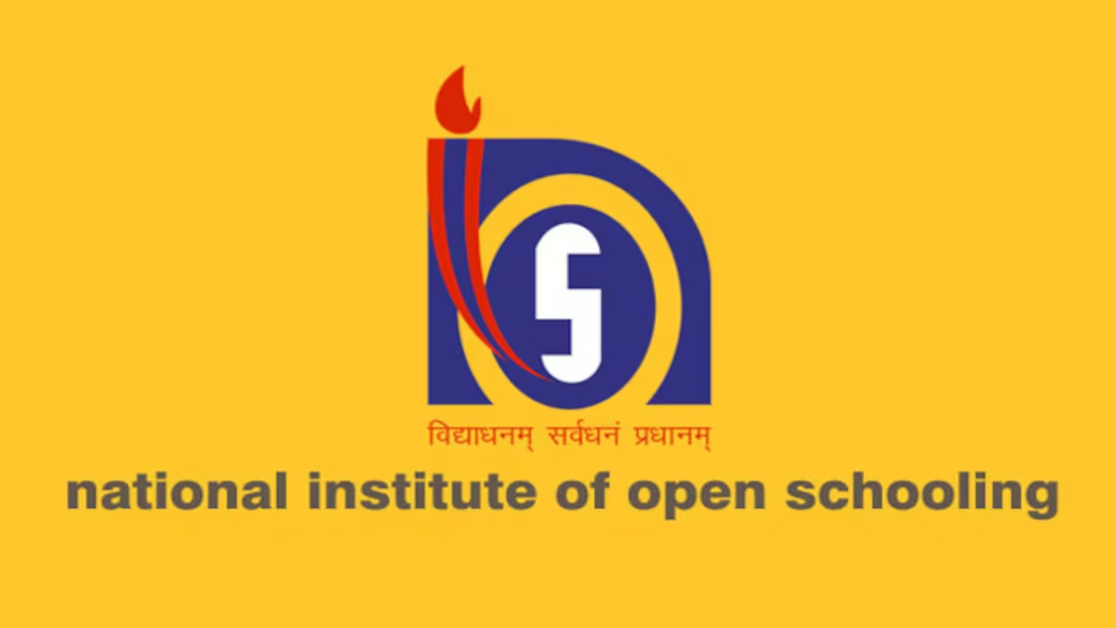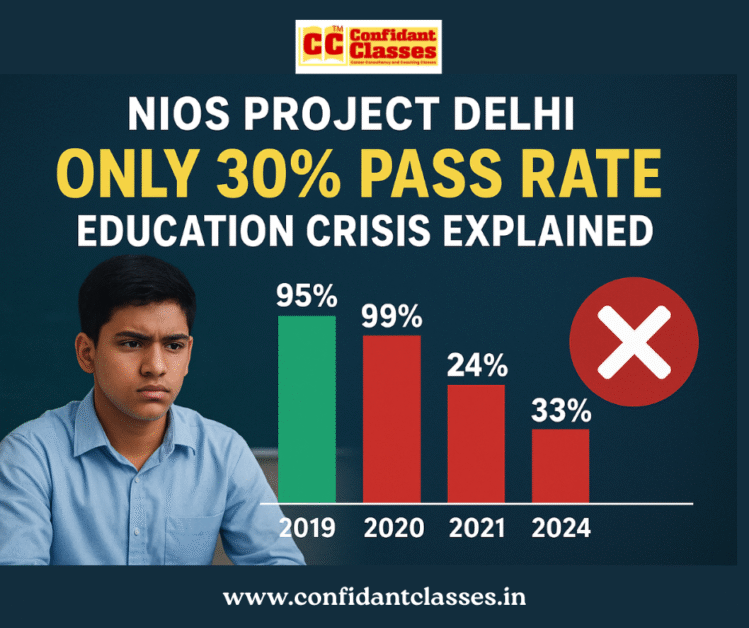NIOS Project in Delhi: Only 30% Students Pass Class 10 Exams in Last Four Years

Understanding the NIOS Project
The NIOS Project (National Institute of Open Schooling Project) was launched by the Delhi Government with a noble aim — to reduce school dropouts and help academically weaker students clear their Class 10 examinations.
Under this initiative, students who fail in Classes 9 or 10, or struggle with academics, are re-registered with NIOS. These students are then given additional academic support through special classes and flexible examination opportunities.
However, data shared by the Delhi Directorate of Education (DoE) through a Right to Information (RTI) response to PTI reveals a concerning picture — the project has not been meeting its intended goals.
Alarming Pass Percentages

According to DoE statistics:
- In 2024, 7,794 students were registered under the NIOS Project for the Class 10 exam, but only 37% (2,842 students) passed.
- Over the past four years, the average pass percentage has been just 30%, meaning seven out of every ten students have failed.
A year-wise summary shows similar trends:
| Year | Registered Students | Students Passed | Pass Percentage |
| 2017 | 8,563 | 3,748 | 44% |
| 2018 | 18,344 | 12,096 | 66% |
| 2019 | 18,624 | 17,737 | 95% |
| 2020 | 15,061 | 14,995 | 99% |
| 2021 | 11,322 | 2,760 | 24% |
| 2022 | 10,598 | 3,480 | 33% |
| 2023 | 29,436 | 7,658 | 26% |
| 2024 | 7,794 | 2,842 | 37% |
While initial years saw encouraging results, the recent decline highlights systemic challenges within the project.
Fee Structure under the NIOS Project
Students enrolling in NIOS are required to pay examination and registration fees as per subject combinations:
- ₹500 per subject (theory)
- ₹120 extra per practical-based subject (like Home Science, Computer Science, or Painting)
- ₹500 registration fee for five subjects + ₹200 for each additional subject
- ₹230 per subject for Transfer of Credit (TOC)
These costs, though modest compared to private schooling, can still be burdensome for students from economically weaker backgrounds.
Challenges and Concerns Raised by Teachers
A Delhi government school teacher, requesting anonymity, shared that poor coordination and lack of consistent monitoring are major reasons behind the high failure rates.
He said,
“Teachers rarely inform parents about attendance or progress of NIOS students. These children do not experience the same academic environment as others, as separate classes are often irregular or missing.”
The teacher further pointed out that some principals allegedly enroll academically weak students in NIOS to artificially boost their school’s overall Class 10 CBSE results — effectively isolating weaker students instead of supporting them.
Experts Criticize the NIOS Curriculum Quality
Ashok Agarwal, President of the All India Parents Association and a senior advocate at the Delhi High Court, strongly criticized the NIOS Project.
He stated,
“Children from poor families come for quality education, but schools divert them to NIOS, which has a substandard curriculum compared to CBSE. Even if they pass, they are often restricted to the Arts stream in Class 11. This is a gamble with children’s futures.”
Agarwal’s remarks underline deep concerns about equity and quality in public education reforms.
Conclusion: Rethinking the Purpose of the NIOS Project
The NIOS Project was designed to give struggling students a second chance — but the data suggests it may be failing its core mission. While the idea of open schooling is valuable, the execution needs urgent improvement through:
- Better teacher training and monitoring,
- Stronger coordination with parents, and
- Academic parity with mainstream CBSE schooling.
Unless these gaps are addressed, the NIOS Project risks becoming a “second-tier” option for students who deserve better educational support.
Top Career Options After 12th Commerce Without Maths


More Stories
UGC Approves 101 Universities to Offer ODL and Online Programmes for 2025–26: Complete List, Admission Deadline, and Key Guidelines
BPSC AEDO Recruitment 2025: Record 9.7 Lakh Applications for 935 Vacancies
ICAI CA January 2026 Exam Dates, Registration, Fees, and Timings – Complete Guide